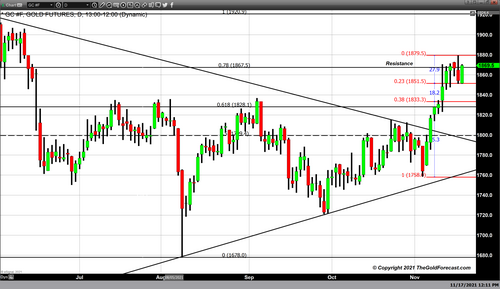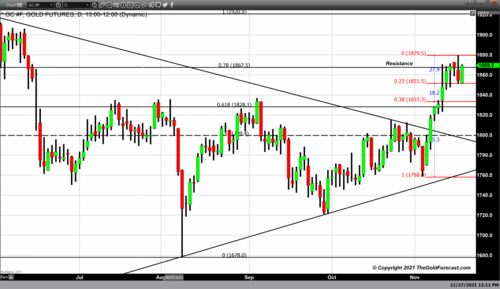

Market participants are once again focused upon the real threat that faces global economies, spiraling inflation. Today the United Kingdom reported that inflation has now hit a 10-year high. In the United States, the current level of inflation is at a 31-year high coming in at 6.2%. Mexico currently has an inflation rate of 6.24%, and many South American countries are running double-digit inflationary levels such as Argentina (52.1%), Brazil (10.67%).

Some countries are running extremely tight economies and maintaining very low inflationary rates such as Japan, Saudi Arabia, and Switzerland. However, real concerns in the United States are mounting as the US government continues to spend dollars vis-à-vis fiscal stimulus with money it simply does not have. The United States continues to run yearly deficits well beyond the wealth it produces as seen through the GDP.
While the Federal Reserve has begun tapering its monthly asset purchases by $15 billion a month, it will continue to add to its enormous asset balance sheet at least until June of next year. With the current asset sheet of the Federal Reserve just north of $8.6 trillion, by the conclusion of their quantitative easing program, the Federal Reserve balance sheet will likely be north of $9 trillion.
Add to that the $4+ trillion in fiscal stimulus that was spent in 2020, and additional expenditures this year once again in the trillions, it is surprising to no one that the inflationary rate in the United States is out of control, now at a level not seen since November 1990.
But wait, there’s more! After passing a $1+ trillion infrastructure bill recently President Biden is now putting forth a new stimulus package that he has labeled “Build Back Better”. I think a more appropriate name for this stimulus plan might be “Build Inflation Quicker”.
While I think this bill has correctly targeted those Americans who are most in need, and is much more correct than spending checks to ALL Americans, as it did in the past, a government cannot continue to spend dollars that it must borrow to fund. Today the house was supposed to begin a debate on Biden’s Build Back Better bill, however, it has been postponed with voting that could begin as early as Thursday or Friday. This new bill being proposed by the current administration has a cost of approximately $1.75 trillion.
Expectations on inflationary pressures by the Federal Reserve continue to assume that the vast majority of these pressures are transitory. Many analysts do not believe that assumption and are adamant that much of the inflationary pressures will be “sticky” lasting well into next year and possibly longer than that.
Based upon our economic recovery occurring at a much more prolonged period than originally anticipated, and the vast amounts of government capital that have been used to aid in that recovery it is no wonder that market participants have once again focused upon the safe-haven asset that for hundreds of years as kept up with inflation; gold.
Gold traded to higher values for seven consecutive days which was followed by two days of price declines. The total decline from the onset of the rally that occurred the first week of November with gold trading at $1758, up to the intraday high yesterday just shy of 1880 was a net decline of 23%. This is a key Fibonacci retracement number for a shallow, but acceptable price correction or decline. Today gold recovered and as of 5:00 PM EST gold futures basis, the most active December contract is currently fixed at $1869.50 after factoring in a net gain of $15.40.
Unquestionably if the current administration continues down this road with tremendous expenditures that the government will have to borrow to pay for, the United States will advance our national debt. It is for the reasons we have spoken about above that I think that market participants continue to focus on gold to preserve their wealth. If this assumption is correct gold has nowhere to go but to higher pricing.
By Gary Wagner
Contributing to kitco.com
Buy, Sell Gold and Silver, with Free Storage and Monthly Yields
